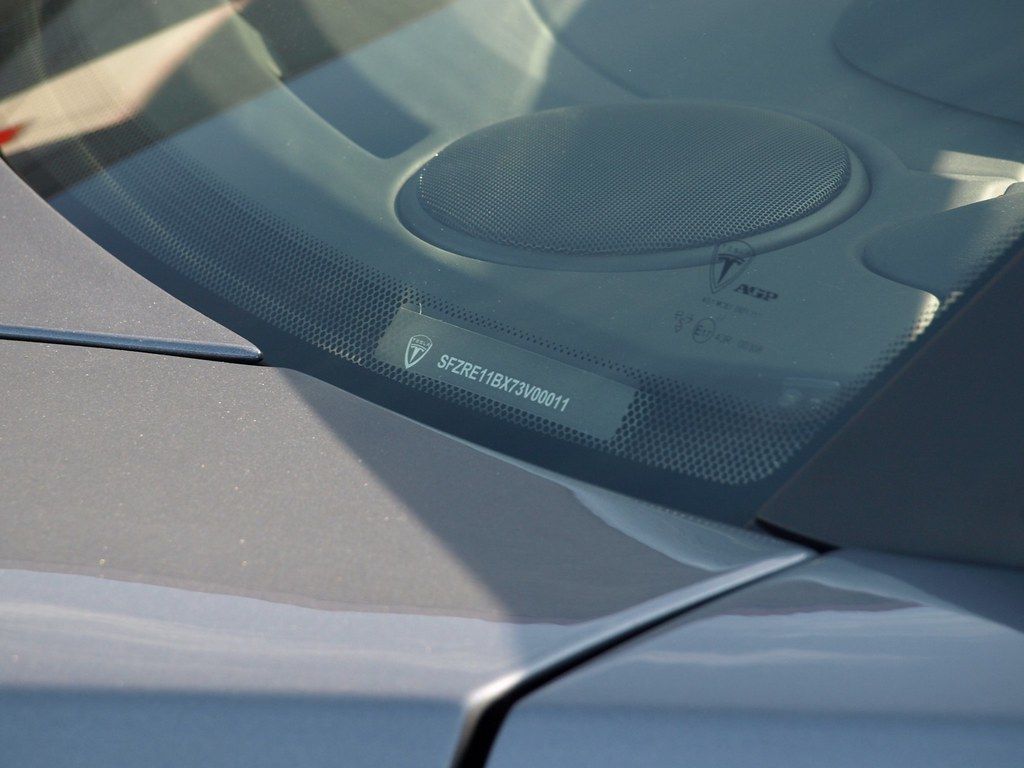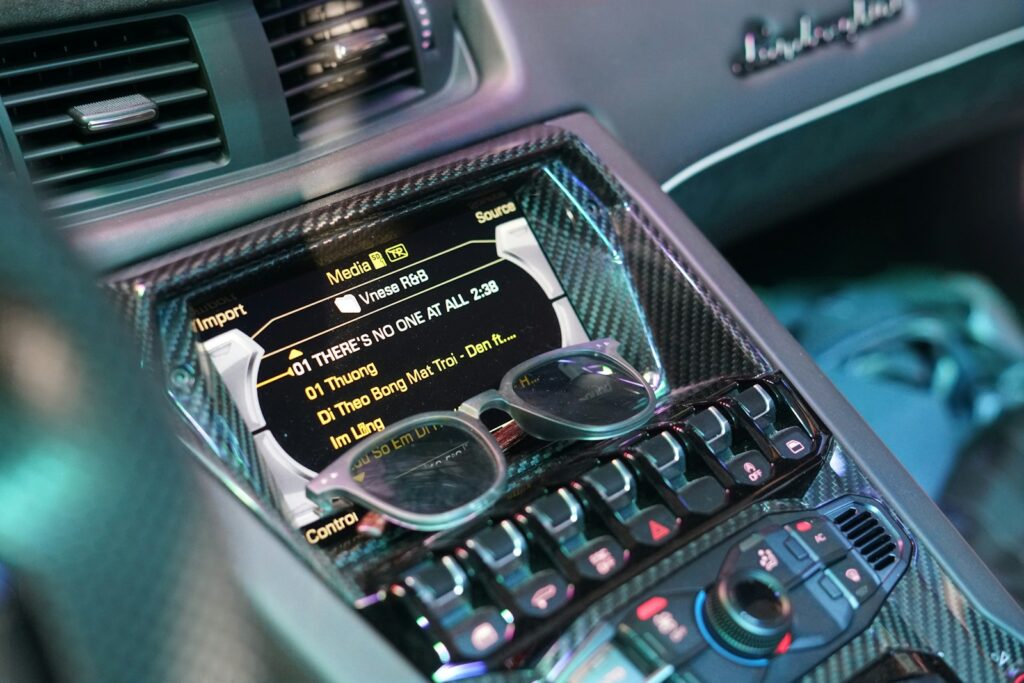
In an automotive world increasingly fraught with hidden histories and potential pitfalls, the Vehicle Identification Number, or VIN, stands as a critical line of defense for consumers. Often overlooked or considered merely a bureaucratic formality for registration and insurance, this unique 17-character alphanumeric code is, in fact, the definitive fingerprint of every vehicle. It holds a wealth of information, from a car’s birth certificate to its entire life story, and understanding how to decipher it is more crucial now than ever before for protecting your investment and ensuring your safety.
Indeed, with the rise of complex vehicle transactions, both online and in person, knowing how to interpret a VIN is paramount. It serves as your personal detective, capable of uncovering everything from a vehicle’s true manufacturing origins and its intrinsic specifications to a history marred by accidents, theft, or even fraudulent activity. Equipping yourself with this knowledge transforms you from a vulnerable buyer or seller into an informed and empowered participant in the automotive market, ready to make decisions with confidence.
This in-depth guide is designed to demystify the VIN, breaking down its intricate structure into understandable segments. We will explore where to find this vital code, what each group of characters signifies, and how it can be used to protect you from costly surprises and potential scams. By the end of this journey, you will possess the practical understanding needed to unlock your vehicle’s secrets, ensuring transparency and peace of mind in every automotive transaction.

1. **Understanding the 17-Character VIN: Your Vehicle’s Unique Fingerprint**The Vehicle Identification Number (VIN) is a highly standardized, 17-character string of uppercase letters and numbers that serves as a unique identifier for a specific car. Introduced in the United States in 1954 and standardized by the National Highway Traffic Safety Administration in 1981, this alphanumeric code is designed to be immutable and comprehensive, encoding specific information about that individual vehicle. Unlike earlier, unstandardized VINs that could be as short as 11-13 characters, the modern 17-character format ensures a consistent and universally recognized system for vehicle identification.
The 17 characters of a VIN meticulously encode a vast array of details about the vehicle. This includes its country of origin, the manufacturer responsible for its production, the specific model, its features, and the precise year it was manufactured. The unique nature of this code means that no two vehicles share the same VIN, making it an indispensable tool for tracking a vehicle’s entire lifecycle and verifying its authenticity across various databases.
Crucially, the modern VIN adheres to strict character limitations to prevent confusion and errors. It exclusively uses capital letters and digits from 0 to 9, but intentionally excludes the letters ‘I’ (i), ‘O’ (o), and ‘Q’ (q). This exclusion is a thoughtful measure to avoid any potential misinterpretation with the numerals ‘1’ (one), ‘0’ (zero), and ‘9’ (nine), respectively. This attention to detail in its design underscores the VIN’s role as an accurate and reliable identifier, essential for both regulatory bodies and consumers alike.
Read more about: Unmasking the Beast: How the VIN Decodes Every ‘Fast & Furious’ Ride and Beyond

2. **Locating Your VIN: Where to Find This Crucial Code**Identifying your vehicle’s VIN is a straightforward process, as manufacturers strategically place this vital code in several easily accessible locations, both on the vehicle itself and within its accompanying documentation. The most common and often first place people look is on the driver’s side dashboard. You can typically see the VIN clearly by looking through the lower corner of the windshield from outside the car, etched or displayed on a plate.
Beyond the dashboard, another very accessible location for the VIN is on the driver’s side doorjamb. Here, you’ll find it printed on a metal plate or a sticker, often alongside other important vehicle information such as tire pressure recommendations. This placement is particularly convenient as it’s visible almost every time you open the driver’s door, making it easy to reference when needed.
For those who may not find it immediately in these primary spots, or for verification purposes, the VIN can also be found in other physical locations on the vehicle. It may be stamped on the firewall or a metal plate inside the engine bay, offering a more permanent and tamper-resistant placement. In some trucks and SUVs, especially older models, you might see the VIN stamped on the front of the vehicle’s frame on the driver’s side, providing an additional physical record.
Furthermore, the VIN is not confined solely to the vehicle’s body. It is a fundamental piece of information included in almost all official documentation associated with your car. You will find the VIN prominently listed on your vehicle registration paperwork, whether it’s a physical copy or an electronic record. Similarly, the state lists the VIN on the vehicle title, which is the official document proving ownership.
When purchasing a new vehicle from a dealership, the window sticker, also known as the Monroney label, will clearly display the VIN. For existing vehicles, your auto insurance policy and insurance cards will also list the VIN of the covered vehicle(s). Even in the realm of online car shopping, sellers frequently include the VIN in their listings, making it readily available for prospective buyers to conduct their initial research.
Read more about: VIN Check Secrets: Uncovering Hidden Dangers and Unmasking Value in Used Cars

3. **Decoding the World Manufacturer Identifier (WMI): Unveiling Origin and Builder**The journey into understanding your VIN begins with its very first characters: the World Manufacturer Identifier, or WMI. This crucial three-character code, forming positions one through three of the VIN, is specifically designed to uniquely identify the manufacturer of the vehicle. It provides immediate insight into where and by whom your vehicle was built, serving as its global origin stamp and factory signature.
The first character of the WMI is particularly telling, as it signifies the general geographic region where the manufacturer is located. For instance, VINs for automobiles built in the United States commonly begin with ‘1’, ‘4’, ‘5’, or ‘7’. This character efficiently narrows down the vehicle’s continent of origin, offering a broad geographical context to its manufacturing heritage. As of April 2021, the ISO specifies codes for various countries and regions, allowing for precise identification across the globe, from ‘A-H’ for Africa to ‘1-5’ for North America.
Following the regional identifier, the second character in the WMI pinpoints the specific manufacturer and often the global region of production. The third digit further refines this identification, representing the vehicle type, such as a passenger car or truck, or even a specific manufacturing division within a larger company. For example, within the ‘1G’ WMI assigned to General Motors in the United States, ‘1G1’ designates Chevrolet passenger cars, while ‘1GC’ identifies Chevrolet trucks. This combined three-digit code, standardized by the Society of Automotive Engineers (SAE), offers a comprehensive and precise identification of the vehicle’s builder.
It’s worth noting that manufacturers producing fewer than 1,000 vehicles annually have a special designation: they use a ‘9’ as the third digit in their WMI. In such cases, the 12th, 13th, and 14th positions of the VIN are then utilized for a second part of their identification, ensuring that even small-volume manufacturers can maintain unique identification within the global standard. This flexibility ensures that every vehicle, regardless of its production volume, carries a traceable and distinct WMI.

4. **The Vehicle Descriptor Section (VDS): What Your Car Is Made Of**Moving beyond the origins of manufacture, the next section of the VIN, spanning characters four through nine, is known as the Vehicle Descriptor Section (VDS). This segment is dedicated to detailing the general characteristics and specifications of the vehicle itself. It acts as an encoded blueprint, revealing key attributes about the car’s design and features according to the manufacturer’s unique system. Each manufacturer employs its own specific method for utilizing these six positions, making the VDS a highly informative, albeit manufacturer-dependent, part of the VIN.
The VDS provides crucial information that helps distinguish one model from another within a manufacturer’s lineup. This typically includes the car’s brand, its specific model designation, and its body type. For instance, it might differentiate between a sedan, an SUV, or a coupe. Additionally, this section often encodes details about the automobile platform used for the vehicle, which can indicate its underlying engineering and shared components with other models.
One of the most practical applications of the VDS for consumers is its ability to identify the engine type. For vehicles with multiple engine choices, most manufacturers since the 1980s have used the eighth digit of the VIN to specify which engine is installed. This can be invaluable for maintenance, repairs, or simply understanding the performance capabilities of a potential purchase. For example, a 2007 Chevrolet Corvette might use ‘U’ for a 6.0-liter V8 engine and ‘E’ for a 7.0-liter V8, making it clear which powertrain configuration the vehicle possesses.
Furthermore, the VDS can also encompass information about a vehicle’s safety systems. This might include details about airbag configurations, anti-lock braking systems (ABS), or electronic stability control (ESC), providing insights into the safety features integrated into the vehicle’s design. Collectively, the characters within the VDS paint a comprehensive picture of the vehicle’s intrinsic characteristics, enabling a detailed understanding of its specifications and design elements.
Read more about: Unmasking the Beast: How the VIN Decodes Every ‘Fast & Furious’ Ride and Beyond

5. **The Critical Check Digit: Your Defense Against Fraudulent VINs**Nestled within the Vehicle Descriptor Section, the ninth character of the VIN holds a singularly important role: it is the check digit. This specific digit serves as a vital safeguard against fraudulent VINs and transcription errors, acting as a mathematical verification of the entire alphanumeric sequence. Its presence is compulsory for all vehicles sold in North America and China, highlighting its significance in ensuring the integrity of vehicle identification in these major markets, though it is not consistently used in Europe.
The check digit is not a random character; rather, it is generated using a sophisticated mathematical formula developed by the U.S. Department of Transportation. This formula processes the other 16 characters of the VIN, and the resulting single digit is then placed in the ninth position. When a VIN is entered into a system, the same mathematical algorithm is applied to the first eight and last eight characters. If the calculated check digit does not match the one present in the ninth position, it immediately signals that the VIN is invalid, potentially indicating a typo, an alteration, or an outright fraudulent number.
The primary purpose of this check digit is to detect inaccuracies, whether accidental or intentional. In an era where vehicle history can be manipulated, the check digit provides an immediate, systematic method for flagging questionable VINs. It offers consumers a foundational layer of protection, as a VIN that fails the check digit validation should be a significant red flag, prompting further investigation before any transaction proceeds. This ensures that the unique identifier you are relying on is authentic and has not been tampered with.
While its use is inconsistent across all global standards, its mandatory inclusion in North America underscores its importance in preventing vehicle fraud and protecting consumers from purchasing vehicles with altered or cloned VINs. For buyers and sellers, understanding the role of the check digit means recognizing a critical tool in validating the authenticity of a vehicle’s identity, thereby enhancing trust and security in the marketplace.
6. **The Vehicle Identifier Section (VIS): Model Year, Plant, and Serial Number**The final segment of the VIN, comprising characters 10 through 17, is known as the Vehicle Identifier Section (VIS). This is the part of the VIN that uniquely identifies the individual vehicle in question, distinguishing it from every other vehicle produced by the same manufacturer. While the WMI and VDS provide broad and characteristic information, the VIS drills down to the specifics of a single car, revealing its age, place of assembly, and its specific order of production.
For vehicles built during or after 1981, when the VIN format was standardized, the 10th digit in the VIS is particularly important as it represents the model year of the vehicle. To maintain clarity and avoid confusion with similar-looking characters, the alphanumeric schedule for model year encoding intentionally excludes the letters ‘I’, ‘O’, ‘Q’, ‘U’, ‘Z’, and the numeral ‘0’. This ensures that each model year is represented by a distinct and easily recognizable character, from ‘A’ for 2010 to ‘L’ for 2020, and continuing with numerals after ‘Y’ for 2000.
Following the model year, the 11th character of the VIN is typically the manufacturer’s code for the assembly plant where the vehicle was built. This plant code is compulsory in North America and China and provides precise information about the specific factory responsible for its construction. Each manufacturer maintains its own unique set of plant codes, which can be an interesting detail for owners or a crucial piece of information for recall tracking and service history verification.
Finally, characters 12 through 17 constitute the vehicle’s unique serial or production number. This is a sequential number assigned by the carmaker, representing the order in which the car completed the assembly line. In essence, it is the car’s unique birth order identifier within its production run. This serial number, combined with the model year and plant code, guarantees that the entire 17-character VIN provides an unassailable and specific identity for every single vehicle, making it an indispensable tool for tracking, registration, and consumer protection.
7. **Free VIN Decoders: Your First Step to Vehicle Information**As we navigate the increasingly complex landscape of vehicle ownership and transactions, the first line of defense and discovery often comes in the form of a free VIN decoder. These readily available online tools are an indispensable starting point for anyone seeking foundational information about a vehicle. They leverage the 17-character VIN to instantly provide crucial build specifications and identify any open safety recalls associated with a particular make, model, and year, valuable for quick research.
A free VIN decoder essentially acts as a basic X-ray of a car’s identity. It can confirm the vehicle’s original factory specifications, such as the exact build plant, engine type, transmission, drivetrain, and even original fuel economy. This information, derived from the manufacturer’s encoding, helps verify that a car’s advertised features match its factory configuration.
Crucially, these free services also provide up-to-date information on open safety recalls. The National Highway Traffic Safety Administration (NHTSA) offers a free VIN Decoder that allows you to query a specific VIN. NHTSA vPIC and safety-recall feeds stream live, and OEM bulletins refresh daily, ensuring that recall status is always current. This feature makes free VIN decoders a vital tool for ensuring vehicle safety, allowing prospective buyers and current owners to proactively address potential defects without incurring any cost.
8. **Unlocking Deeper Insights with a Full Vehicle History Report**While free VIN decoders offer an excellent starting point, a comprehensive full vehicle history report is where the true investigative power of a VIN is unleashed. Often available for a low one-time fee from trusted providers like AutoCheck or Carfax, these detailed reports delve far deeper than basic specifications and open recalls. They provide a vital layer of transparency, crucial for anyone looking to make a truly informed decision about a used vehicle purchase, by revealing an extensive timeline of the car’s life.
A full history report expands upon the fundamental data by uncovering critical details that could significantly impact a vehicle’s value, safety, and long-term reliability. These reports meticulously track title brands, which indicate severe past issues such as a “salvage” designation from an insurance company declaring the vehicle a total loss due to damage or theft, or “flood damaged” titles. Understanding these is paramount, as they often signal underlying structural or mechanical problems.
Beyond title issues, these reports also provide an odometer timeline, helping to verify mileage and flag any potential odometer fraud. They reveal lien records, indicating if there’s any outstanding debt against the vehicle, and theft records, confirming if the car has ever been reported stolen. Furthermore, many reports include invaluable supplementary information such as auction photos, prior sale prices, the number of previous owners, and often a detailed service history. This level of detail empowers consumers to understand a vehicle’s entire journey.
Read more about: The Genius Tiny Details in Beyoncé’s ‘Countdown’ Video You *Definitely* Missed (And How They Shaped AI’s Future)

9. **Navigating the Used Car Market: What to Check with a VIN**When stepping into the used car market, armed with a vehicle’s VIN, you possess a powerful instrument for due diligence. The VIN check is not merely a formality; it’s a proactive measure that empowers you to uncover potential hidden issues and avoid costly mistakes. A savvy buyer will meticulously check for a variety of critical indicators before committing to a purchase.
One of the most critical checks involves looking for branded titles. A “salvage” title implies the vehicle was deemed a total loss by an insurer, often due to severe damage. Other red flags include “rebuilt” titles, “flood damaged,” or “hail damaged.” These brands significantly impact a car’s resale value and can signal ongoing problems, even if repairs have been made.
Moreover, a VIN check helps verify odometer mileage, an area where fraud can be rampant. By comparing the odometer reading on the dashboard with the timeline provided in a vehicle history report, you can easily spot discrepancies. The report can also reveal if the vehicle has been reported stolen, offering peace of mind. Additionally, researching recalls and warranty claims ensures that any past or current safety issues have been addressed.
Furthermore, the VIN can confirm the number of previous owners, provide insight into whether there are any outstanding liens on the vehicle, and detail the car’s service history, including the extent of any accidents. Accessing this comprehensive information allows buyers to evaluate a car’s true value, assess its potential risks, and negotiate with confidence, transforming the opaque process into a transparent and informed decision.
Read more about: Regret with Every Tank: 12 Used Cars That Fail to Deliver Promised Reliability and Fuel Efficiency

10. **Decoding the Model Year: A Crucial Detail for Every Vehicle**Within the Vehicle Identifier Section (VIS) of the VIN, specifically the tenth character, lies a singularly important piece of information for consumers: the vehicle’s model year. Accurately decoding this digit is crucial for everything from assessing a car’s age and features to verifying its eligibility for certain recalls or insurance policies. Understanding this standardized code empowers you to precisely determine the vehicle’s vintage.
For vehicles manufactured during or after 1981, when the 17-character VIN format became mandatory, the tenth digit exclusively represents the model year. The system uses an alphanumeric schedule designed to prevent confusion, intentionally excluding letters like ‘I’, ‘O’, ‘Q’, ‘U’, ‘Z’, and the numeral ‘0’. This carefully constructed coding ensures distinct identification for each year. For instance, ‘A’ represented the model year 2010, ‘B’ denoted 2011, and this sequence continues, with ‘L’ for 2020, ‘M’ for 2021, and so forth.
The consistency of this encoding system is a tremendous asset for consumers. By referencing the standardized model-year codes, you can instantly confirm the exact year of manufacture, a detail vital for a myriad of reasons. This information is indispensable when checking for year-specific recalls, researching common issues associated with a particular model year, or even simply comparing vehicle generations for upgrades in safety or technology. It ensures that the model year you are told matches the official record, adding another layer of verification to your vehicle research.
Read more about: Strategic Foundations: Understanding the U.S. Military’s Global Power and Operational Framework

11. **The Value of VINs for Sellers: Building Trust and Transparency**While much of the discussion around VINs often centers on empowering buyers, the Vehicle Identification Number is equally crucial for sellers who wish to foster trust and facilitate a smooth transaction. In today’s informed market, transparency is paramount, and proactively providing an accurate VIN in any listing or discussion signals honesty and confidence in the vehicle’s history. Neglecting to share this vital code can, unfortunately, raise red flags and lead potential buyers to suspect that information is being intentionally withheld.
Sellers who openly share their car’s VIN empower prospective buyers to conduct their own due diligence, which streamlines the evaluation process and expedites decision-making. By allowing buyers to perform a VIN check, sellers effectively demonstrate that they have nothing to hide regarding branded titles, theft reports, odometer veracity, or accident history. This transparency not only helps in verifying essential information but also builds a strong foundation of trust, making buyers more comfortable and eager to proceed with a purchase.
Furthermore, providing the VIN upfront helps attract serious buyers who appreciate the opportunity to perform advanced research. It signifies that the seller is professional and understands the modern car market’s expectations. Beyond the initial research, the VIN is an absolute necessity for buyers to secure insurance coverage and register the vehicle. By embracing the VIN as a tool for transparency, sellers can significantly enhance their credibility, attract more interested parties, and ultimately achieve a quicker, more satisfactory sale.

12. **Beyond the Sale: Continued Importance of Your VIN**The utility of a Vehicle Identification Number doesn’t cease once a vehicle is purchased and registered. For current owners, the VIN remains a critically important identifier, providing ongoing benefits for safety, maintenance, and financial planning throughout the entire lifespan of the vehicle. Understanding its continued relevance is essential for responsible vehicle ownership.
One of the most significant ongoing uses of your VIN is for tracking manufacturer-issued defect notices and open recalls. Government agencies like NHTSA, in conjunction with automakers, regularly issue bulletins for potential safety issues. By inputting your VIN into official databases, you can easily check for any active recalls that might affect your specific vehicle, ensuring that critical safety repairs are performed promptly and free of charge. This proactive approach to recall management helps maintain the vehicle’s safety and reliability.
Moreover, your VIN is indispensable for checking the current warranty status of your vehicle. Before planning any major repairs or considering an extended service contract, verifying what factory coverage or existing warranties are still active can save you thousands in unexpected costs. The VIN also plays a role in tracking routine maintenance, identifying mechanical details for parts ordering, and even obtaining fair market value estimates for your car, which is crucial for insurance purposes or future resale.
Finally, in the unfortunate event of theft or an accident, the VIN is the primary means by which law enforcement and insurance companies identify and track your vehicle. It is the unalterable fingerprint that links your car to its legal records, aiding in its recovery if stolen or streamlining the claims process if damaged. Thus, the VIN is not just a pre-purchase tool; it is a lifelong companion for every vehicle owner, vital for peace of mind and informed decision-making long after the initial transaction.
The Vehicle Identification Number is far more than a mere string of characters; it is the definitive foundation of vehicle transparency and consumer protection. From its intricate structure revealing manufacturing origins to its crucial role in uncovering hidden histories, a VIN check empowers every individual in the automotive journey. Whether you’re a prospective buyer safeguarding your investment, a seller building trust, or a current owner ensuring ongoing safety and value, mastering the VIN is a critical skill in today’s dynamic car market. By leveraging both free decoders and comprehensive history reports, you transform into an informed decision-maker, fully equipped to navigate the complexities of vehicle transactions with confidence and peace of mind.






